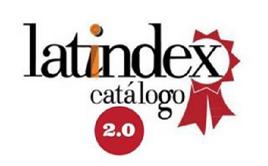DISTANCE EDUCATION EVOLUTION IN ARGENTINE UNIVERSITIES: INFLUENCE OF TECHNOLOGICAL INNOVATION
DOI:
https://doi.org/10.52292/j.eca.2017.603Abstract
For over thirty years, the so-called information and communication technologies have penetrated into the field of distance education, which has developed to a lesser extent in emerging countries. In this context, the research question is: what is the influence of technological innovation in the historical evolution of distance education offered by national universities in Argentina? This issue is addressed through a descriptive study from a qualitative methodological approach. Using documentary analysis as a data collection technique, the
websites of the 55 national public universities were surveyed. Results show that the offer of virtual courses and degrees has experienced a significant growth over the past 17 years. This growth is correlated with the emergence and incorporation of these technologies in the geographical area under study and, after a certain time, a regulatory framework for this higher education modality was developed. Although Argentine society has a greater preference for face-to-face education, technological innovation boosts new ways of communication and information transfer. Therefore, if such technologies are exploited to their full potential, distance education has a promissory future.
Downloads
Published
How to Cite
Issue
Section
License
Aviso de derechos de autor
Aquellos autores/as que tengan publicaciones con esta revista, aceptan los términos siguientes:
- Los autores/as conservarán sus derechos de autor y garantizarán a la revista el derecho de primera publicación de su obra, el cual estará simultáneamente sujeto a la licencia Atribución-No Comercial 4.0 Internacional CC BY-NC 4.0.
- Los autores/as podrán adoptar otros acuerdos de licencia no exclusiva de distribución de la versión de la obra publicada (p. ej.: depositarla en un archivo telemático institucional o publicarla en un volumen monográfico) siempre que se indique la publicación inicial en esta revista.
- Se permite y recomienda a los autores/as difundir su obra a través de Internet (por ej.: en páginas web institucionales o personales) una vez publicado su trabajo, lo cual puede producir intercambios interesantes y aumentar las citas de la obra publicada (Véase El efecto del acceso abierto).




















